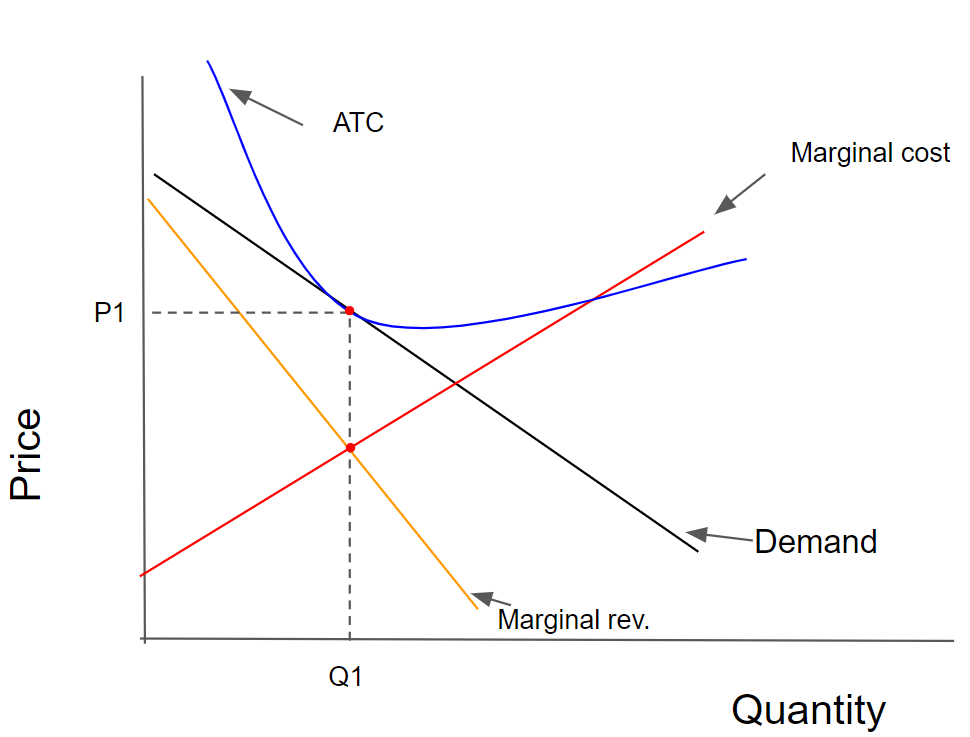Sleek Sneakers Co. is one of many firms in the market for shoes.
a. Assume that Sleek is currently earning short-run economic profit. On a correctly labeled diagram, show Sleek’s profit-maximizing output and price, as well as the area representing profit.
b. What happens to Sleek’s price, output, and profit in the long run? Explain this change in words, and show it on a new diagram.
c. Suppose that over time consumers become more focused on stylistic differences among shoe brands. How would this change in attitudes affect each firm’s price elasticity of demand? In the long run, how will this change in demand affect Sleek’s price, output, and profit?
d. At the profit-maximizing price you identified in part (c), is Sleek’s demand curve elastic or inelastic Explain.
Explanation
A. The diagram below represents a monopolistically competitive firm that is able to maximize profit when marginal cost = marginal revenue. Q1 represents the profit-maximizing quantity and P1 represents a profit-maximizing price.
In the above diagram, the red dot at P1 represents the price that Sleek sneakers can use in order to generate a profit. The green box represents the short-term profits that Sleek is making in this market. ATC or average total cost is well below the price at profit-maximizing quantity, which allows this firm to enjoy short-term profits.
B. In the diagram below, the long-run scenario is shown. In the long run, more firms are joining this market as it is easy to join and leave. As product choice increases and more firms enter the market, the demand curve for Sleek will shift to the leftward.
In the above diagram, it’s clear that the profit is gone, as the market has become perfectly competitive as more firms join. Long-term economic profits are 0 as the average total cost is equal to price (P1) at the profit-maximizing quantity. In short, the price in this scenario falls to ATC, profit is gone and output remains the same at Q1.
C. An increased focus on stylistic differences means that consumers will be willing to pay more for certain shoes and these consumers won’t be as affected by significant price changes. This means that the demand curve will not notably change with a change in price, or more succinctly, the demand becomes price inelastic.
In the long run, Sleek might be able to earn a profit if they can increase the price above ATC due to the unique stylistic interests of the consumers.
D. The demand curve is elastic because there is still a limit on the price that consumers are willing to pay. This is not necessarily good, it is a unique good that consumers are willing to pay a higher price for because of stylistic differences. At a certain point, if prices are raised too high the demand would start to decline.





